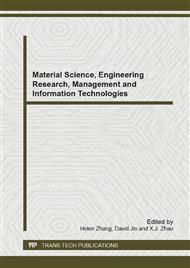p.279
p.285
p.290
p.295
p.300
p.304
p.308
p.315
p.321
Excess Heat Measurement and Transmutation Study of Pd Wires after Lasers Stimulation in a D2 Gas-Loading System
Abstract:
This study involves excess heat generation stimulated by Argon-ion (λ = 488, 514 nm) and infrared (λ = 1037, 1560 nm) lasers in a D/Pd gas-loading system. The deuteron loading ratios of palladium deuterides ranged from 0 to 0.76. The results showed that more excess heat was produced in the system triggered by a shorter wavelength (λ = 488 nm) laser than the other wavelengths’. Some new elements, such as Ag, Ca and some others, are found by SEM and EDS on the surface of palladium samples after being triggered by the lasers. It implied that some nuclear transmutation processes might happen in the experiment.
Info:
Periodical:
Pages:
300-303
Citation:
Online since:
June 2014
Authors:
Keywords:
Price:
Сopyright:
© 2014 Trans Tech Publications Ltd. All Rights Reserved
Share:
Citation:


